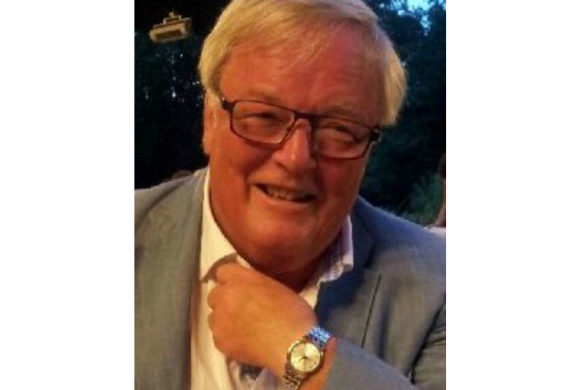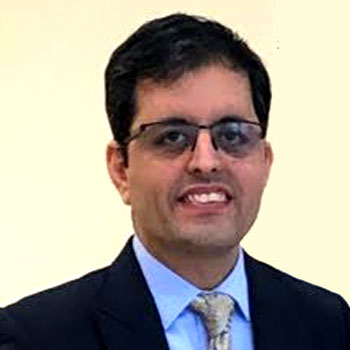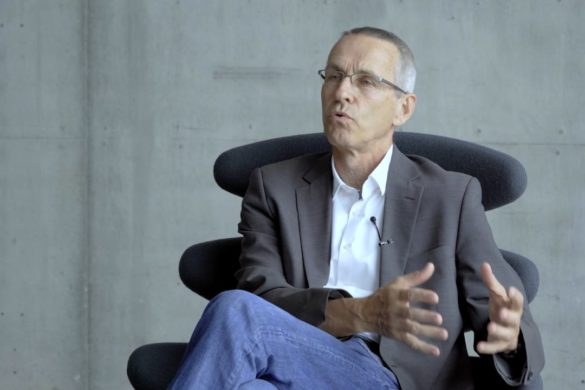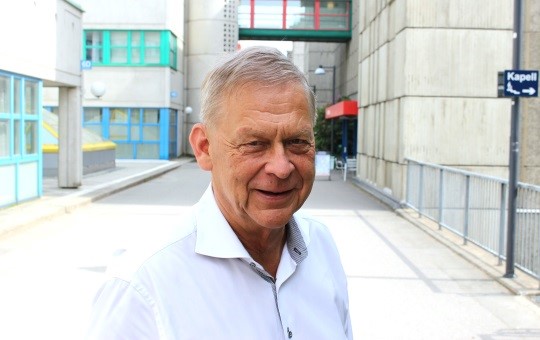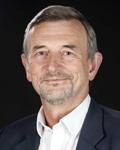 Martin Rossor is Professor of Neurology, Vice-Chair, JPND Scientific Advisory Board and Past President of the Association of British Neurologists
Martin Rossor is Professor of Neurology, Vice-Chair, JPND Scientific Advisory Board and Past President of the Association of British Neurologists
The EU Joint Programme in Neurodegenerative Disease Research (JPND) – Meeting “The needs of patients, academia, and industry”
Gian Luigi Lenzi (GLL): Can you summarise for the Neuropenews readers what the JPND is about?
Martin Rossor (MR): JPND (the EU Joint Programme – Neurogenerative Diseases) is a research initiative focused on the neurodegenerative diseases. The joint programming concept was proposed in 2008 as a communication of the European Commission – working together to tackle common challenges effectively. The challenges are those which require more resources to meet than are found in any one nation and where a co-ordinated approach defined by a common vision, strategic research agenda and management structure is needed. Neurodegenerative diseases were recognised as a major economic burden and unmet need. JPND was the pilot for this new approach. Its success is evidenced by the decision to engage with non-EU Member states /Associated countries. Canada was the first of the Third Country members to join JPND in 2012 and recent discussions have taken place with the USA.
GLL: Do you think that the JPND can somehow contribute to lessening the economic burden of the neurodegenerative disorders on Europe’s struggling health budgets?
MR: I do indeed believe that JPND will lessen the economic burden of neurodegenerative disease, but research is expensive and we have to pay more now to reap rewards later. There are however likely to be early wins in the areas of health service and social research which are well represented in JPND.
GLL: How can JPND contribute to the alignment of neuro-degenerative research in Europe?
MR: The economic and personal burden of neurodegenerative diseases tend to focus on dementia. Indeed, cognitive impairment whether mild or major is a frequent accompaniment of neurodegenerative disease. Importantly, however, JPND recognised the commonalities of many of the disease processes and the value, in terms of the research endeavour, of bringing neurodegenerative disease together as a single initiative. The most effective way in which this has been achieved has been the publication of a strategic research agenda launched in February 2012 with five thematic priorities.
- The origins of neurodegenerative disease
- Disease mechanisms and models
- Disease definitions and diagnosis
- Developing therapies, preventive strategies and interventions
- Healthcare and social care.
The first phase of the implementation plan built on the research agenda with annual calls for proposals, action groups to determine research needs and opportunities and action groups to promote engagement, commitment and partnership. The Scientific Advisory Board met recently to commence a review of the agenda and it was a tribute to the JPND community to see how much has been achieved in international collaboration.
GLL: JPND is also about partnership with industry and patient associations. Can you describe to the Neuropenews readers the importance of such a partnership?
MR: Tackling major challenges has to involve everyone – not just researchers, not just participants, not just funders, not just governments. Patients will always be central to research, not only as participants but as sources of unique knowledge around the disease and increasingly as active researchers themselves as has been evidenced by examples of Citizen Science. It has perhaps taken a long time to realise the value of the partnership between patient organisations and researchers but the patient stakeholder consultation meeting in Brussels in 2011 was a great success. In relation to industry we are in a time of rapid change in which new models of academic industry partnership are emerging and this has to be for the benefit of all. Industry has enormous expertise both in the basic science and also in how to bring and develop a candidate drug to the marketplace. Industry have also recognised the size of the neurodegenerative disease challenge and there have been very encouraging developments such as the move towards making placebo data available to the research community.
GLL: In June 2014 the European Academy of Neurology – EAN will be a reality. Which is your wish to the EAN?
MR: My wish for the EAN is that it becomes a very powerful voice for the partnership of clinicians, neuroscientists and patients and to enjoy the success of European partnership that has been evidenced by the JPND. I hope the EAN will be confident and ambitious as an academy, as there can no more important challenge than that of brain disease.




